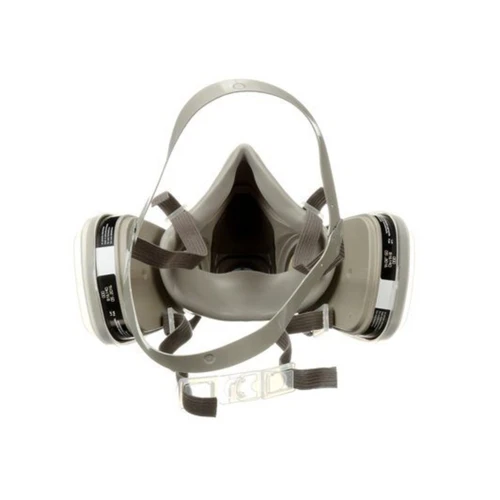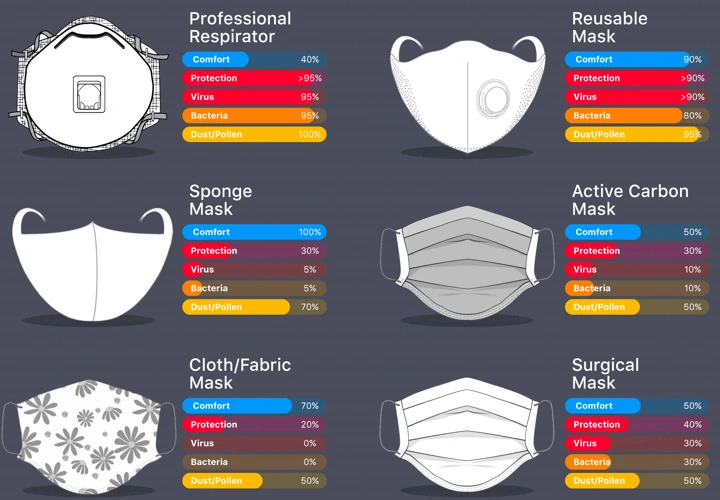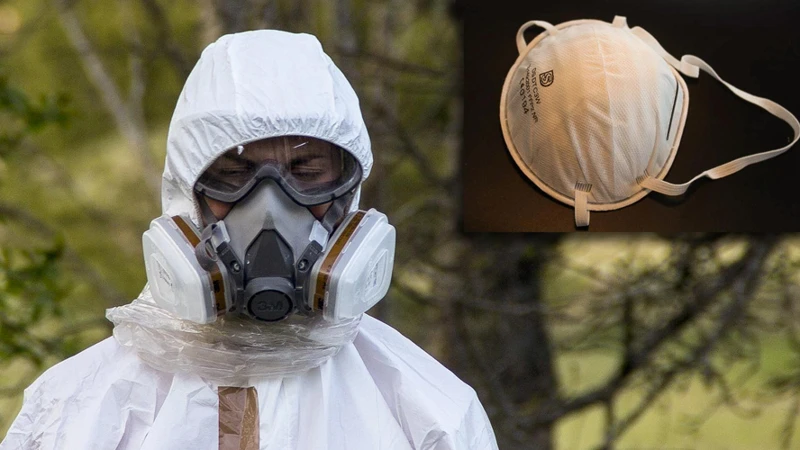When engaging in a painting project, your health and safety should be a top priority. The use of a painting respirator mask is crucial in protecting yourself from the inhalation of harmful fumes and airborne particles. Whether you’re a professional painter or a DIY enthusiast, understanding the significance of these masks and the different types available can help you make informed decisions about your respiratory protection.
Importance of Safety Masks for Painting
There’s a common misconception that all painting tasks are harmless; however, this is far from the truth. Safety masks for painting are essential as they provide a barrier against hazardous substances, including volatile organic compounds (VOCs) and particulates that can lead to respiratory issues and other health problems. A proper mask can not only protect your lungs but also ensure that your painting experience is safe and enjoyable.
Different Types of Respirator Masks
There’s a variety of respirator masks designed to cater to different painting scenarios. Each has its features, benefits, and appropriate applications. Understanding these differences is the first step in selecting the best respirator for painting that meets your specific needs.
Choosing the Best Respirator for Painting
To select the best respirator for painting, you must consider several factors including the level of exposure to paint fumes, the duration of the painting session, and personal comfort preferences. The two primary categories are full face and half mask respirators, each providing different levels of protection and benefits.
Full Face Respirator for Painting: Benefits and Recommendations
A full face respirator for painting offers comprehensive protection, covering both the respiratory system and the eyes. This is particularly beneficial when working with spray paints or in environments where paint particles might irritate the eyes. Full face masks also provide a better seal against the face, making them ideal for more extensive painting projects.
Half Mask Respirator for Painting: Uses and Top Picks
Alternatively, a half mask respirator for painting covers the nose and mouth, providing protection against fumes while allowing for the use of protective eyewear separately. They are lighter and more compact, which makes them a top pick for shorter jobs or for those who wear prescription glasses.
Features of the Best Painting Respirator Mask
A high-quality painting respirator mask should have certain features to ensure maximum protection and comfort. When shopping for a respirator, look for these key attributes to ensure that you’re investing in a product that will serve you well.
Filtering Facepiece for Painting: What to Look For
- NIOSH Certification: Ensure the filtering facepiece for painting meets industry standards.
- Particulate Filters: Look for P100 or N95 filters that can trap the smallest of particles.
- Cartridge Types: Depending on the chemicals in the paint, various cartridges can provide the necessary protection.
Reusable Painting Mask: Advantages and Options
One significant advantage of a reusable painting mask is its cost-effectiveness over time. These masks can be fitted with replaceable filters and cartridges, making them a versatile and eco-friendly option. When considering a reusable mask, look for one that offers a secure fit, easy maintenance, and the ability to change filters as needed.
Paint Fume Respirator Mask: Protection from Toxic Fumes
Long-term exposure to paint fumes can have severe health implications. A paint fume respirator mask is designed to filter out harmful vapors, providing a safeguard against these toxic substances. With the right respirator, you can ensure that your lungs are protected, allowing you to focus on achieving the perfect finish.
Selecting the Right Paint Fume Respirator
To select the right paint fume respirator, consider the types of paint you’ll be using and the environment in which you’ll be working. Ensure that the mask fits well and that the filters are suited for the specific chemicals in the paint. A well-chosen mask can be the difference between a job well done and potential health risks.
Respirator Mask for Spray Painting: Special Considerations
Using a respirator mask for spray painting is especially important due to the aerosolized particles that are generated. These masks should offer a secure seal and be equipped with appropriate filters to handle the high volume of fine particulates typical in spray painting environments.
Personal Protective Equipment (PPE) for Painting Projects
Personal Protective Equipment, or PPE for painting, encompasses more than just respirator masks. It includes a range of gear designed to protect different parts of the body from paint and chemicals.
Comprehensive Guide to PPE for Painting
- Respirators: Essential for protecting your respiratory system.
- Gloves: Necessary to prevent skin contact with paint and solvents.
- Goggles: Protect your eyes from splashes and particulates.
- Coveralls: Keep paint off your clothing and skin.
Ensuring Your Safety with the Correct PPE
Ensuring your safety while painting is not just about selecting the right respirator; it involves a holistic approach to PPE. Always wear the correct protective gear for the task at hand and make sure that each piece of equipment is in good condition and fits properly.
Maintaining Your Respirator Mask
Once you’ve invested in a high-quality respirator mask, maintaining it is essential for ensuring that it continues to provide optimal protection. Regular cleaning and proper storage are key components of respirator upkeep.
Cleaning and Storing Your Reusable Painting Mask
After each use, clean your reusable painting mask according to the manufacturer’s instructions to remove any paint or chemical residue. Store it in a dry, clean place away from direct sunlight to preserve the integrity of the mask’s materials and filters.
When undertaking a painting project, not only is it vital to protect your respiratory system with a suitable respirator mask for painting, but it’s also crucial to consider other protective measures. To ensure your safety and comfort throughout the job, consider reading our guides on disposable coveralls for painting to keep paint off your clothes, DIY ventilation for painting to maintain clean air, and the importance of protective footwear for painting to safeguard your feet from spills and drops. All these precautions will contribute to a safer and more efficient painting experience.
When to Replace Your Painting Respirator Mask
Even with diligent care, respirator masks do not last forever. Be mindful of the manufacturer’s guidelines on when to replace the mask or its components. Regular inspection for signs of wear and tear, such as cracked seals or damaged straps, will ensure you’re always protected by equipment that’s in top working order.
By understanding the necessity of a painting respirator mask and the various types available, you can make educated choices for your health and safety. Whether you opt for a full face or half mask respirator, make sure it meets your specific needs. Remember to maintain your reusable painting mask properly and always adhere to the recommended PPE for painting to ensure a safe working environment.


